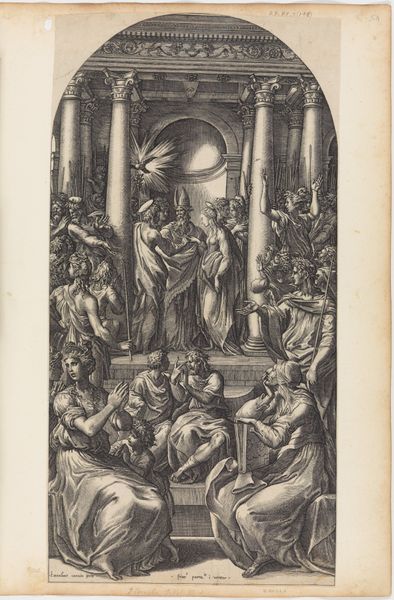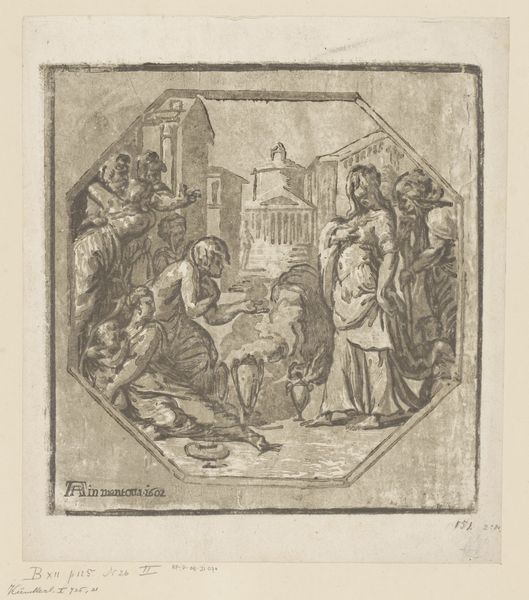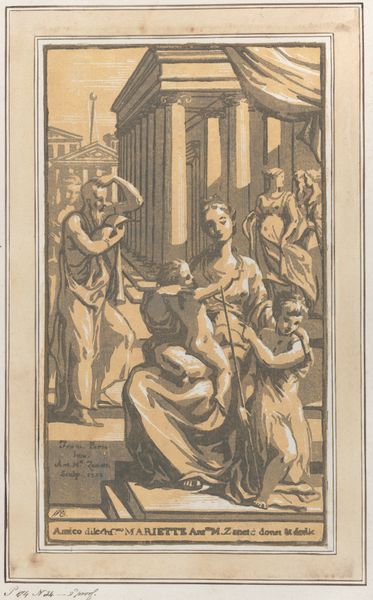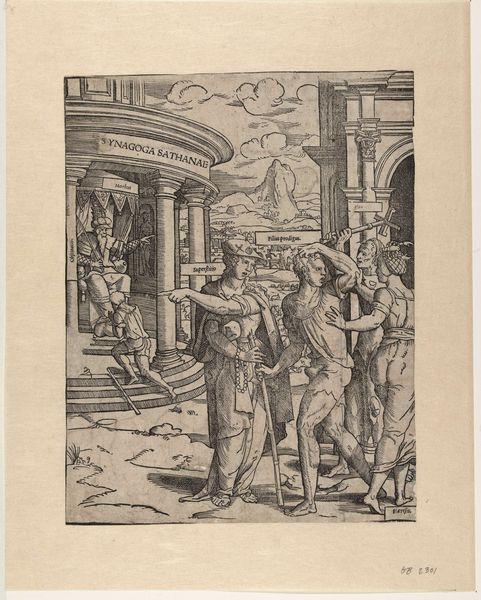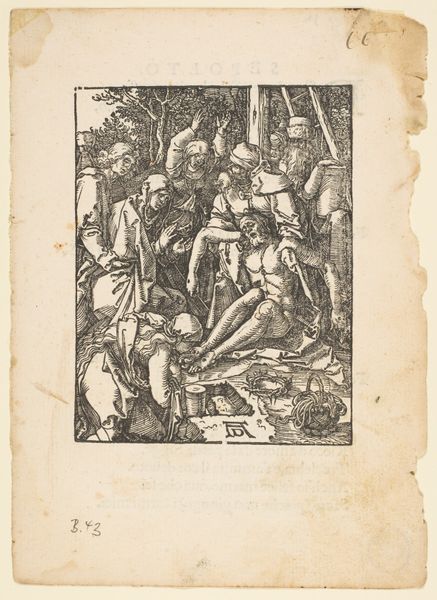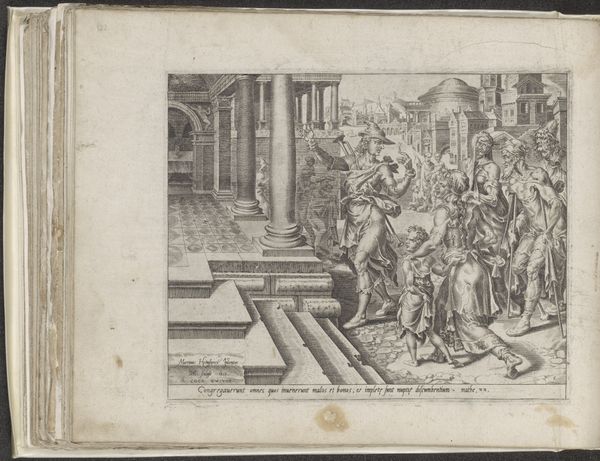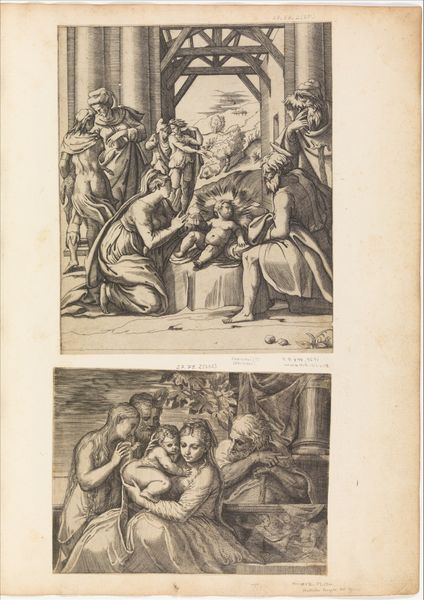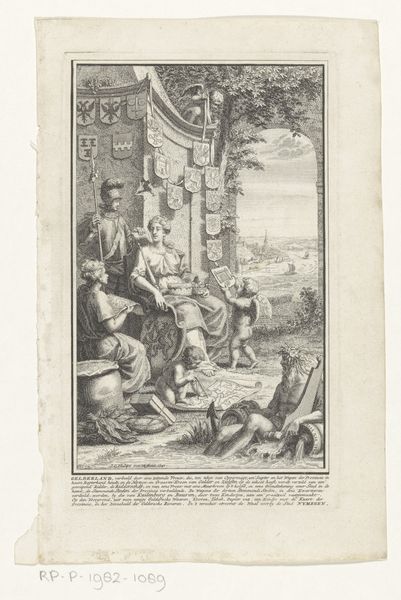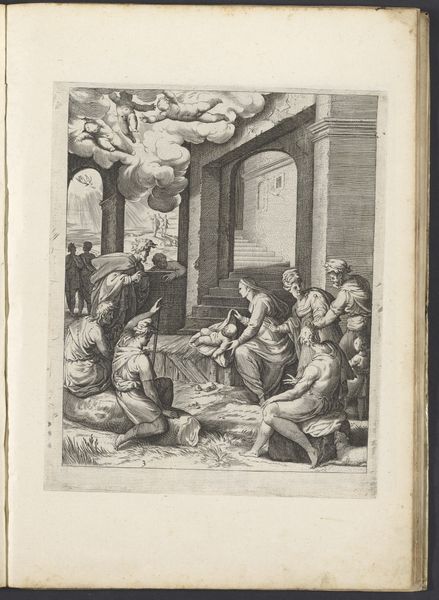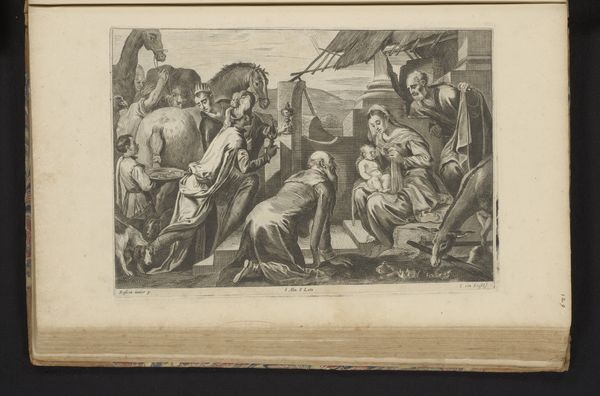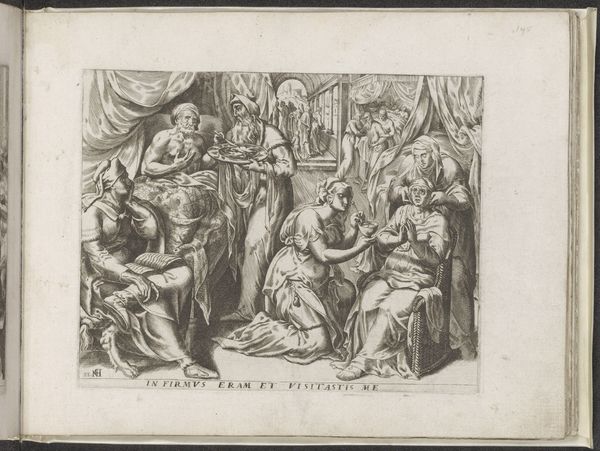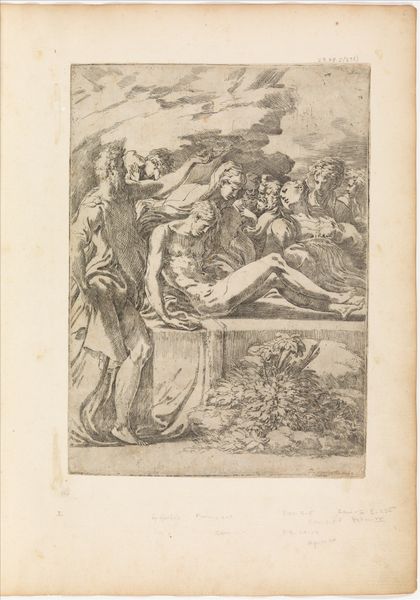
drawing, print, etching, engraving
#
drawing
# print
#
etching
#
figuration
#
11_renaissance
#
history-painting
#
northern-renaissance
#
engraving
Copyright: Public Domain
Editor: This is Pieter van der Heyden’s "The Adoration of the Shepherds," made sometime between 1530 and 1572. It’s an engraving and etching, giving it a really intricate feel. What strikes me is the sheer detail crammed into a relatively small space. What production techniques or context influenced its creation? Curator: It’s important to understand the rise of printmaking during this period. Etchings and engravings weren't just about making pretty pictures. They were a key form of mass communication. These prints democratized art, making it available to a wider audience beyond the wealthy patrons who commissioned paintings. Van der Heyden isn't just depicting a religious scene, he is also participating in a larger economic system that depends on accessibility through replication, dissemination, and the market it generated. Editor: So, the print isn’t just the art itself, but it’s also a product in a system? Does this change how we view religious art, traditionally commissioned? Curator: Absolutely! The Northern Renaissance witnessed this collision of religious subject matter with the rapidly changing means of artistic production. Think about the engravers' workshops, the labor involved, the circulation routes of these prints—how these all contributed to shifting the understanding of faith. Moreover, it made the image itself less unique. Its power resided in its accessibility and its function in reinforcing religious belief for the masses through repetitive imagery. Editor: That's a great point, mass production transforming art from unique object to reproducible messaging. Something I'll keep in mind! Curator: Indeed, considering the materiality and circulation offers insights far beyond the composition.
Comments
No comments
Be the first to comment and join the conversation on the ultimate creative platform.
